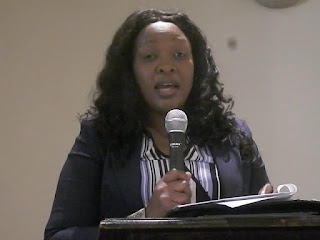We Must Make Zambia a Hostile Environment for Financial Crimes - FIC

Financial Intelligence Centre – FIC has vowed to root out financial crimes in the country. FIC Director General Mary Tshuma says there is need to step up measures in the fight against financial flows. FIC Director General Mary Tshuma speaking at the conference She said this at the FIC second annual conference on Anti money laundering and countering the financing of terrorism and other financial crimes. “As you may be aware, criminal activity is more sophisticated than ever, the impact of financial crimes is vast, but the effects go deeper than simple economics. The full cost of financial crime weight on normal people. The sick children, and elderly who do not receive essential treatment; lives lost but cutting corners and using substandard building material” Ms Tshuma said. “We must make Zambia a hostile environment for financial crimes “she added. Ms. Tshuma says while Zambia has enabling legal framework on anti-money laundering there is need to be more vigilant in the